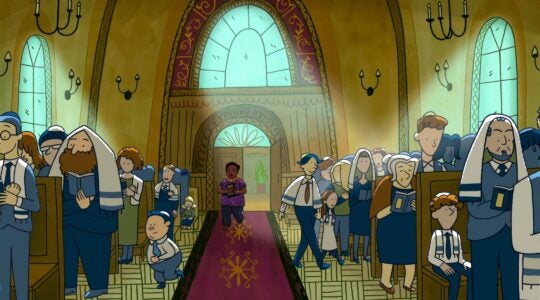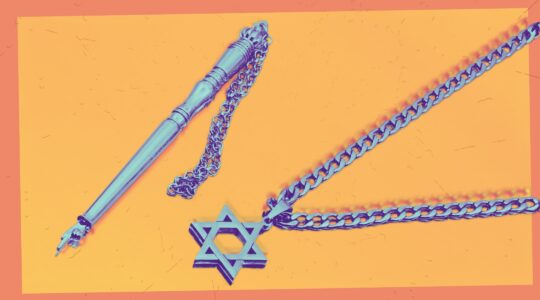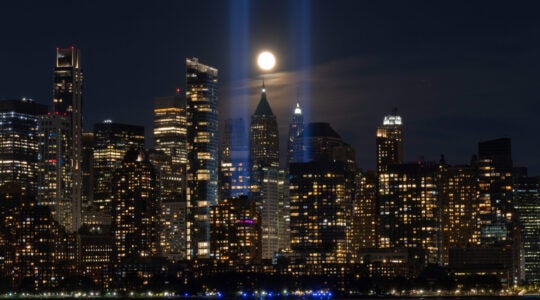I’ve said this before: I don’t know if Donald Trump is a white supremacist or an anti-Semite. I do know that he is good for white supremacy and anti-Semitism.
And I’ll add to that: I doubt the president is pro-Covid, but he couldn’t have done a better job of helping spread the virus had he been on its payroll. Whether eschewing a mask, taunting governors for following his own government’s advice or proposing unproven cures, Trump has been a super spreader by proxy.
Hate, anti-Semitism, Covid-19: There’s a link between these medical and metaphorical contagions. It is found in his press secretary’s response after Trump retweeted a video showing a group of supporters in Florida, including a man who twice chants “white power.” Kayleigh McEnany explained Trump’s retweet, which he took down but for which he did not apologize: “His point in tweeting out that video was to stand with his supporters, who are oftentimes demonized.”
That’s the skeleton key to Trump’s presidency: stoking his base, comforting the aggrieved, owning the left.
This tendency is also the key to his Charlottesville remarks. His “very fine people, on both sides” statement after the 2017 Unite the Right rally has been debated, and occasionally distorted, to death. Let’s talk about it again, because it’s important.
The ostensible focal point of the Unite the Right rally were attempts by the city to remove a Confederate statue. As Trump would later say, people “were also there because they wanted to protest the taking down of a statue of Robert E. Lee.”
However, the rally was organized by various far-right and white supremacist groups for other extremists — not by or for Southern “heritage” groups. Even the United Daughters of the Confederacy denounced what it called the “hate groups” that organized the rally.
On Aug. 11, the night before the main rally, hundreds of white nationalists, some wielding tiki torches, gathered at the University of Virginia. This was the mob that chanted “white lives matter” and “Jews will not replace us.” Trump’s first tweet came the next day, after clashes between far-right protesters and anti-hate counter-protesters: “We ALL must be united & condemn all that hate stands for. There is no place for this kind of violence in America. Lets come together as one!” Later that day, when a car driven by a white supremacist killed a counter-protester, Trump said, “We condemn in the strongest possible terms this egregious display of hatred, bigotry and violence on many sides, on many sides.”
“Many sides.” Up to this point, Trump did not specifically condemn the racists who organized the rally, angering many observers. Trump focused on the clashes between the protesters and the counter-protesters — not the torch-light march, not the car-ramming, not the racist rally.
The next day, after even fellow Republicans like Florida Sen. Marco Rubio called on Trump to condemn the “terror attack by #whitesupremacists,” the White House tried again, saying “The president said very strongly in his statement yesterday that he condemns all forms of violence, bigotry and hatred, and of course that includes white supremacists, KKK, neo-Nazi and all extremist groups. He called for national unity and bringing all Americans together.”
“All forms” and “that includes” suggest that the anti-racist protestors as well as the KKK and neo-Nazis were driven by bigotry and hate — a clear equivalence. If I condemn “all forms of cholesterol, and that includes the bad cholesterol,” that means I also condemn the good cholesterol.
Criticism of the president subsided somewhat — for two days. At an Aug. 15 press conference to discuss infrastructure, a reporter asked about his initial comments on Charlottesville. Trump said, “Yes, I think there’s blame on both sides. If you look at both sides — I think there’s blame on both sides. And I have no doubt about it, and you don’t have any doubt about it either.”
Again, Trump is focusing on the clashes in Charlottesville, not the racist rally nor the racist groups that organized it. In Trump’s framing, the tragedy of Charlottesville was not that white supremacists gathered in force in an American college town in 2017, but that two groups of agitators fought violently in the streets.
His insistence that this was a Confederate heritage event led to his most argued-about comment: “[Y]ou had some very bad people in that group, but you also had people that were very fine people, on both sides….You had people in that group that were there to protest the taking down of, to them, a very, very important statue and the renaming of a park from Robert E. Lee to another name.”
Certainly, Trump’s people had time to digest the accounts by law enforcement and local officials. They had to know that the rally was a gathering of zealous white supremacists.
But then as now, whenever Trump gets close to an idea that could be embraced by a Democrat or that might alienate even a small portion of his base — whether condemning a racist video or wearing a mask — he plays almost exclusively to the Maga crowd. Typical presidents would have understood that to lead a coherent, bipartisan assault on Nazis or a deadly virus would carry no political risk, and might even ensure their re-election. Not Trump. I’d say he was unmasked by Covid-19, but his response to Charlottesville back in 2017 told us exactly who he is.
The New York Jewish Week brings you the stories behind the headlines, keeping you connected to Jewish life in New York. Help sustain the reporting you trust by donating today.





